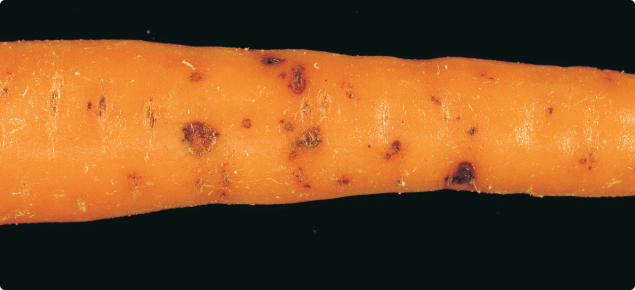About the disease
In Western Australia cavity spot disease of carrots is caused by the soil-borne fungus Pythium sulcatum.
Cavity spots are small elliptical lesions (usually less than 10mm across) often surrounded by a yellow halo. Infection can take place anywhere along the carrot root and lesions start as pinhead-size spots.
In most cases visible symptoms develop in the month before harvest maturity and develop rapidly if conditions are favourable. Cavity spot reduces quality so that carrots become unacceptable for local and export fresh markets. It has resulted in severe losses and has been difficult to control.
An extensive survey of commercial carrot crops showed that cavity spot was:
- more prevalent in late summer and autumn-harvested crops
- more serious on soils with pH less than 7, than on higher pH
- not reduced by the soil fumigant metham sodium
- more severe following another carrot crop.

